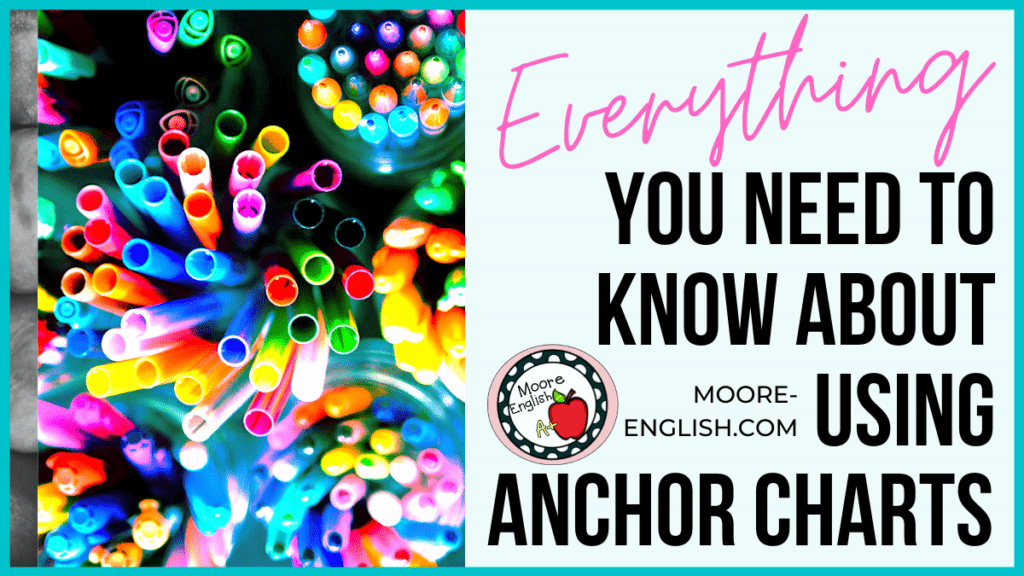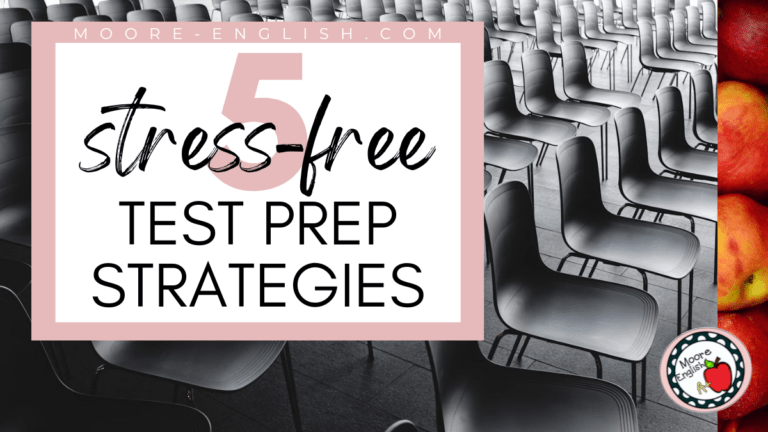Like many other teachers, I love everything about anchor charts: the big pages, the colorful markers, and the fun fonts. But making anchor charts in secondary is not quite the same as making anchor charts for primary.
This post this post may contain affiliate links. Please read the Terms of Use.
Make every anchor chart together. Sometimes in elementary school, we make an adorable anchor chart, laminate it, and use it every year. You could do that in secondary, but students take greater ownership of the material if you all make the anchor chart together. Depending on the topic, students can take notes as you build the chart, or they can just participate through discussion. If you teach multiple sections of the same subject, you may end up with several versions of the same anchor chart–and that’s okay! Each chart will be unique just as every section is unique.
Hang charts prominently. Anchor charts are only useful if they are visible, so even if you have multiple versions of the same anchor chart, keep each one visible. When a chart loses its utility, take it down. You can always roll it away and pull it back out if you need it later.
Utility trumps beauty. While it is fun to make beautiful anchor charts, an anchor chart should be useful above all else. This means using clear, vivid handwriting. The best anchor charts also feature some kind of text feature like a numbered list, a graphic organizer, or an acronym (like this one).
Strategically choose when to make your chart. Sometimes it makes perfect sense to create your anchor chart at the beginning of a unit, but sometimes the concepts are better discussed part way through the unit. If you build the chart too early, students forget the material or the material does not seem relevant. But if you build the chart too late, students don’t have enough time to internalize the material. As with all good planning, make sure to intentionally plan when you will build the anchor chart.
Make an immediate reference. Once you build the anchor chart, start referencing it immediately. Model referencing the chart and give students an opportunity to reference the chart. For example, when my students build their rhetoric anchor chart, we immediately analyze rhetoric in a series of commercials. The next day, students reference the chart as they write their own commercials. On the third day, students reference the chart as they watch and analyze their classmates’ commercials.
Sign your charts. After my students build an anchor chart, they sign their work. This may seem like a waste of time, but this little action helps students take ownership of the content. Further, this helps you hold students accountable for the material on the chart.
What are you tips and tricks for building successful secondary anchor charts? Let us know in the comments.


Photo by Greg Rosenke on Unsplash











